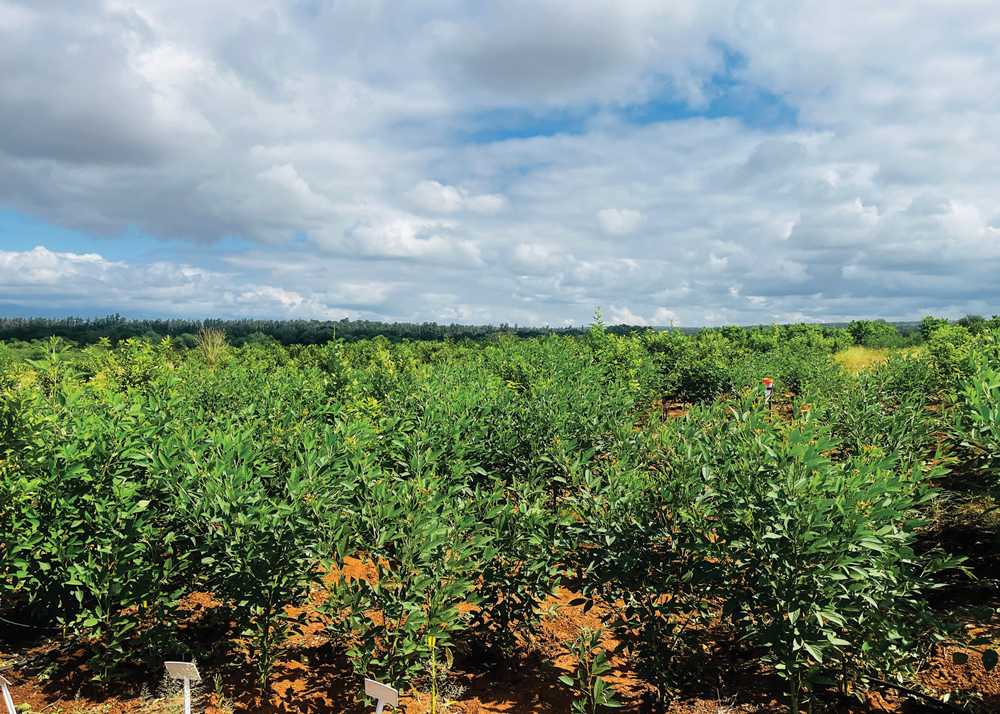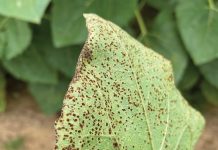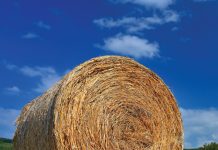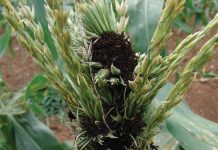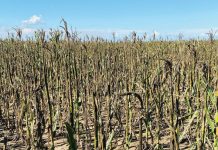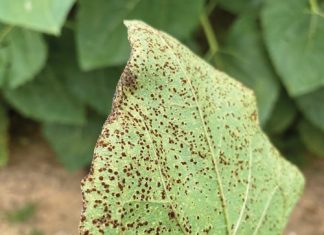
ARC-Grain Crops, Potchefstroom

Zaid Bello,
ARC-Grain Crops, Potchefstroom
On a global scale, the issue of climate change requires immediate action as it affects many parts of our day-to-day life activities. Climate change is a result of unchecked human activities, primarily the burning of fossil fuels such as coal, oil, and gas, which increases the presence of atmospheric greenhouse gases.
It is correct to say that our ways of generating power for electricity, heat, transportation, and industries, combined with our ways of interacting with the land, serve as the primary drivers of climate change. Agriculture as one of the ways of interacting with the land contributes to the occurrence of climate change. This is through emissions of greenhouse gases like methane and nitrous oxide, which are potent contributors to global warming.
Methane is primarily from livestock production, while nitrous oxide is from the use of inorganic fertilisers. Agriculture is one of the leading sectors responsible for climate change, accounting for roughly a quarter of human-induced greenhouse gas emissions globally. Climate change brings extreme weather conditions such as erratic rainfall, floods, drought, and heat waves, as well as severity and high frequency of extreme conditions. Invariably, these conditions cause a decrease in agricultural productivity, especially in the developing world. This is one of the challenges faced by agriculture in South Africa.
The changing climate impacts agriculture in terms of crop productivity and yields, total factor productivity, and ultimately farm income and viability. Unfortunately, the effects of climate change on crop production cannot be easily avoided since crop production is highly dependent on the weather and climate of each season. Regrettably, since a large portion of agriculture in South Africa takes place under rainfed conditions, a decline in average annual yields is expected under climate change. This is particularly the case for maize and wheat, which are staple foods. Due to projected increasing temperatures and high evaporation rates, there will be an increase in demand for irrigation.

In many parts of South Africa, especially in semi-arid regions such as the Limpopo province, adaptation to climate change is a major challenge for successful farming. Producers are noticing that the province is getting warmer and drier, with more frequent droughts. This threat is exacerbated by poor land management, resulting in soil degradation and greenhouse gas emissions. To tackle these challenges, the way forward is to embrace means of coping (adapting) or preventing (mitigating) climate change.
Adaptation strategies include conservation agriculture, utilising drought-resistant crop varieties, diversifying crops, adjusting planting dates, improving irrigation efficiency, early warning systems to manage extreme weather events, and agroforestry. The latter is a sustainable, relatively inexpensive, and efficient adaptation and coping measure. Agroforestry can help producers better manage soil water and biological resources combined with external inputs.
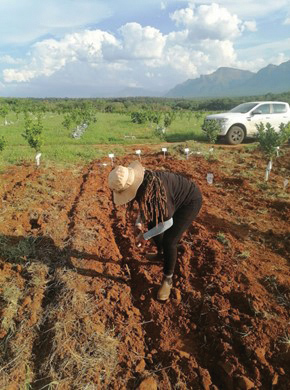
Agroforestry as a form of climate change mitigation and adaptation
Agroforestry is a sustainable land use system that is both economically and ecologically sound. Integration of trees and crops offers a promising solution to the challenges faced by producers. This integration enhances ecosystem services, improves soil health, and increases resilience to climate change. Integrating trees into farmland helps sequester carbon in trees and soil, thus reducing overall emissions. Trees act as a carbon sink by absorbing carbon dioxide from the atmosphere and storing it, improving soil health, and preventing soil degradation and erosion. Agroforestry systems enhance this process, reducing the carbon footprint on farms. Moreover, it improves efficiency by reducing inputs such as fertilisers and pesticides, leading to lower input costs.
As an approach for mitigation against climate change, agroforestry enhances biodiversity and ecosystem services by providing, among other benefits, soil conservation, water retention, microclimate regulation, and a habitat for pollinators and beneficial organisms. It also plays a major role in enhancing overall farm productivity through the addition of litter and organic matter, phytoremediation, and watershed protection. Common agroforestry systems include agro silviculture (trees with crops), silvopasture (trees with livestock), and forest farming. Agroforestry has been commended throughout the world as this practice has proven to improve yields in grain crops, increase benefit to cost, and reduce fertiliser applications, to mention a few.
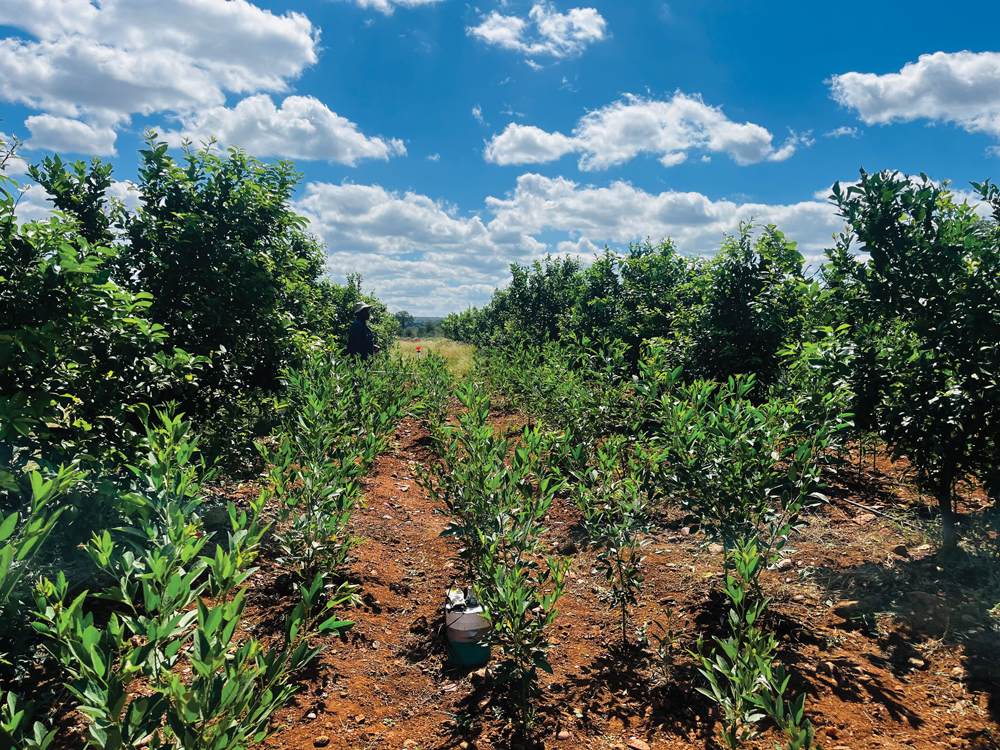
Irrespective of the benefits, there are some challenges associated with this practice. Among the challenges identified are financial and technical barriers to implementing agroforestry. However, there are government policies and incentives encouraging tree planting on farms. Also, the possibility of resistance from traditional farming systems cannot be overlooked. On the brighter side, there is increasing global support for agroecology and sustainable farming – hence, a need for awareness among producers in shielding their production from the harsh conditions posed by climate change. There is a need to encourage readers to support agroforestry initiatives, promote sustainable farming practices, and advocate for policies that integrate climate-smart agriculture. The message that agroforestry is a key tool for mitigating and adapting to climate change should be propagated through all media possible.
A path towards sustainability – the Agricultural Research Council (ARC) story
ARC-Grain Crops is actively conducting research that addresses mitigation against and adaptation towards climate change. These studies play a significant role in advancing sustainable agricultural practices in semi-arid regions. The findings from this research help train producers on the significance of various agricultural methods, particularly agroforestry, in grain crop production. The mandate of ARC-Grain Crops is strategic and need-driven research on grain crop production. Therefore, research such as agroforestry focusing on climate change for sustainable food production is an imperative move. These studies will also assist producers in adapting to climate change while simultaneously enhancing their livelihoods. One of the studies is looking into integrating legumes into different-aged lemon tree fields.
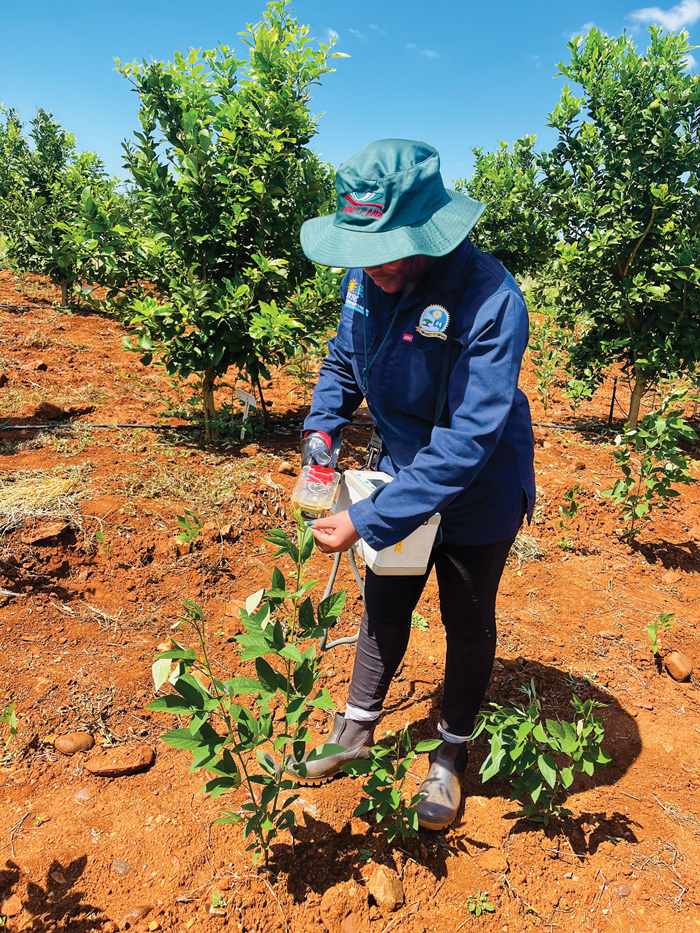
Integration of lemon trees and legumes
The semi-arid regions of Limpopo face challenges such as soil degradation, water scarcity, and declining agricultural productivity, exacerbated by climate change. Traditional monoculture systems for grain crops are often unsustainable in this type of environment. Although agroforestry offers potential solutions, there is limited research on integrating lemon trees and legumes in these systems, particularly in the context of locality and climate change adaptation. In the Limpopo area, there are lots of citrus farms, including lemon trees. Lemon trees are proposed due to their high economic importance, suitability in the semi-arid conditions of Limpopo, ability to filter pollutants
from the air, low carbon footprint, and resilience. On the other hand, legumes are multifunctional crops that have the potential to significantly reduce production costs for producers. Most importantly, an increase in demand and rising global prices for lemons have been reported.
Fortunately, ARC-Grain Crops have been collaborating with the Department of Agriculture to investigate how lemon trees and legumes can effectively be integrated into agroforestry systems in Limpopo’s semi-arid regions. A field experiment is ongoing in the Mopani and Vhembe districts on lemon producers’ fields. Since the Limpopo province is the second leading producer of lemons in South Africa (32%) and has an adequate number of lemon producers in the mentioned districts, it is understandable that the study is situated in these districts. This study aims to introduce varying densities of pigeon pea (Cajanus cajan) into existing different-aged lemon tree plantations as an agroforestry strategy to promote sustainable agricultural practices and enhance climate change resilience in the semi-arid regions of Limpopo. Legumes such as pigeon pea are important crops for agroforestry, and it is one of the mandate crops for ARC-Grain Crops. Pigeon pea is good as a cover and a rotation crop, and it is consumed as a source of protein by humans and as fodder by livestock.
Pigeon pea is very palatable and highly nutritious. It has the potential to provide natural nitrogen ions in the soil for the companion or succeeding crops in rotation, increasing soil organic matter and yields of important crops in the context of climate change. Furthermore, they require low production input and technical know-how. Pigeon pea have been identified as an underutilised crop, and as such there is a great economic opportunity as a niche market for producers. Additionally, there is a critical need for empirical data on the interactions between lemon trees and pigeon pea in these systems for effective climate adaptation strategies. This combination supports diverse cropping systems that can enhance economic and ecological sustainability. Their complementary growing seasons also make them ideal for integrated farming, potentially increasing productivity and resilience to climate variability.
Incorporating a legume such as pigeon pea into the production system stimulates the development of rhizobia bacteria, facilitating biological nitrogen fixation. This reduces reliance on synthetic nitrogen fertilisers and contributes to soil fertility, reducing the production burden on the producer. This study will focus on evaluating the impact of this integration on soil health, water use efficiency, crop yields, carbon sequestration, and overall climate resilience. Studying tree-crop interaction in agroforestry will help devise appropriate ways to increase the overall productivity of the land.
 At the end of this three-year study, it is expected that there will be information on the impact of pigeon pea on soil fertility, growth, physiological response, and yield of lemon trees on this farm. Furthermore, the results will inform producers on the resource use of both the crops and soil moisture retention in the field. The carbon sequestration potential of lemon tree-legume agroforestry systems, including above-ground biomass and soil carbon storage, will also be part of the information that will be generated from this study. These will generate empirical data and help to give a view of the impact of agroforestry as a means of climate change mitigation and adaptation.
At the end of this three-year study, it is expected that there will be information on the impact of pigeon pea on soil fertility, growth, physiological response, and yield of lemon trees on this farm. Furthermore, the results will inform producers on the resource use of both the crops and soil moisture retention in the field. The carbon sequestration potential of lemon tree-legume agroforestry systems, including above-ground biomass and soil carbon storage, will also be part of the information that will be generated from this study. These will generate empirical data and help to give a view of the impact of agroforestry as a means of climate change mitigation and adaptation.
